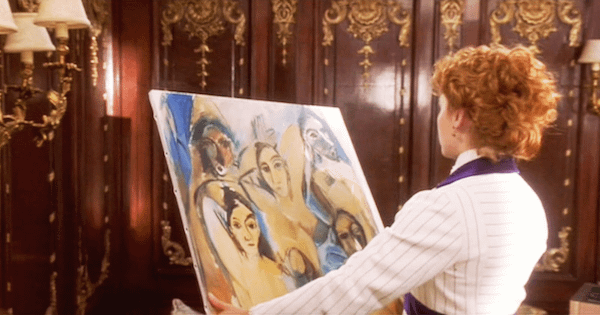Art
A Titanic Tiff Over a Famous Picasso Painting
There has been a storm raging over the latest version of the movie Titanic. Re-released in 3D at the beginning of April, James Cameron’s Titanic has been caught in the center of a whirlpool.
The original film grossed over $600 million in the US alone, which was a record at the time. As a movie, it was emotional and engrossing, telling the tale of the fictional star-crossed couple Rose and Jack (played by Kate Winslet and Leonardo DiCaprio) aboard the ill-fated luxury liner.
 While the movie was based on actual events and some real people, many of the story points are fictionalized or stretched for artistic license. For example, there was no Le Couer de la Mer (The Heart of the Ocean) necklace. It was a wonderfully romantic story device to propel the movie. However, the blue diamond necklace is based on the supposedly cursed Hope Diamond. Further, there was a sapphire necklace aboard the actual Titanic, and Cameron may have woven much of the truth to create a different reality.
While the movie was based on actual events and some real people, many of the story points are fictionalized or stretched for artistic license. For example, there was no Le Couer de la Mer (The Heart of the Ocean) necklace. It was a wonderfully romantic story device to propel the movie. However, the blue diamond necklace is based on the supposedly cursed Hope Diamond. Further, there was a sapphire necklace aboard the actual Titanic, and Cameron may have woven much of the truth to create a different reality.
The creative liberties also extended to the art (paintings) owned by Rose in the film, points of which have made people wonder whether the pieces actually sank with the Titanic.
First, when Jack visits Rose’s room, he looks at Waterlilies by Monet. Although the painting did exist at the time of the Titanic, it was never aboard – and it never sank with the ship.
But the biggest controversy has come from the use of Picasso’s Les Demoiselles d’Avignon.
Many people have questioned if this painting actually sank with the Titanic. Not so. Although this painting (painted in 1907) DID exist at the time of the Titanic disaster (1912), it was NOT aboard the ship. It hangs in the entrance to the MOMA (Modern Museum of Art), where it has been for decades! In the movie, Rose removes this very famous painting from her luggage when she settles into her rooms. In the original version of the Titanic, the painting is seen sinking to the bottom of the ocean (along with Jack). But curiously, this scene is not included in the 3D version. Instead, it is modified. Edgar Degas’ work, L’Étoile (The Star), was used. Although, like the others, this painting was never aboard the Titanic.
Why was the Picasso replaced in the sinking scene? Perhaps all the confusion led Cameron to change it. As a matter of fact, it is a combination of confusion and copyright infringement which prompted the change.
The controversy? Cameron never had the permission of the Picasso estate to use this particular piece of Picasso artwork. Why did Cameron use it if he didn’t have permission? And why did the estate not grant permission?
Picasso’s estate most likely did not grant permission because the masterpiece was never on board the ship – and obviously never lost. James Cameron’s original request to include it in the original 1997 movie was refused. But… he used it anyway. When the Artists Rights Society (a company that represents visual artists and their estates – Picasso’s is one) complained, Cameron did pay a fee to use the image.
With the release of Titanic in 3D however, the Society was back, claiming that the use is not covered under the original agreement. At this time, no payment has been made, and the outcome will be interesting: a titanic battle of intellectual property right vs. fair use. Only time will tell, but the movie Titanic will go on!











